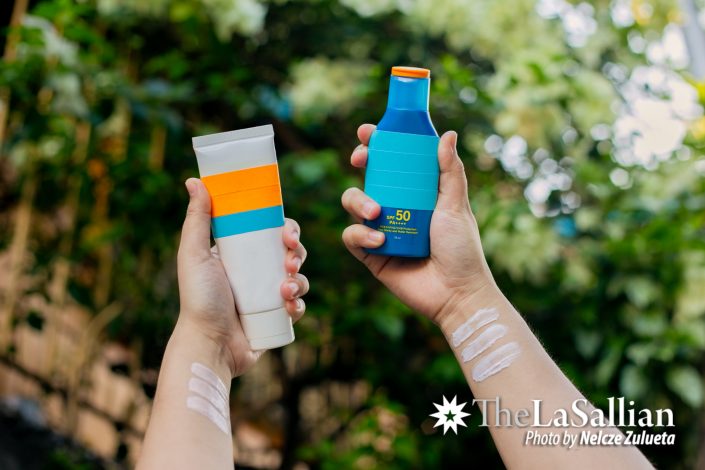Last March 20, the Philippine Atmospheric, Geophysical and Astronomical Services Administration (PAGASA) officially declared the start of the country’s dry season—not summer, the weather bureau clarified—which marked the end of the northeast monsoon or Amihan.
Along with the temperatures peaking this dry season, the sun is also at its maximum elevation, reaching its peak at around noon every day. The strong sunlight also poses a threat in the form of ultraviolet (UV) radiation, which emits high energy that can damage the deoxyribonucleic acid (DNA) of our skin cells. Skin cells continue dividing throughout their lifetime, but extensive DNA damage and mutations can cause these cells to go out of control—growing and multiplying even when not necessary, and possibly leading to skin cancer.
This risk of getting sunburned, skin cancer, and permanent skin damage underscores the pressing need to avoid overexposure to harsh sunlight, with products like sunscreens often relied on to offer added sun protection.
Scrutinizing the products
In an interview with The LaSallian, Dr. Linda Yu, president of the Philippine Society for Cosmetic Science, explains the distinction between sunblocks and sunscreens, “We used to use the word ‘sunblock’ for agents that could physically block UV rays, while sunscreens absorb the rays and convert them to something less destructive.”
However, since 2011, the United States Food and Drug Administration (US FDA) prohibited the usage of the word “sunblock”—requiring all sun protection agents to be referred to as “sunscreens” instead, as they usually possess both physical and chemical filtering properties that work hand-in-hand for “maximum skin protection”. Along with the efforts of the US FDA, the Association of Southeast Asian Nations Cosmetic Directive (ACD) meets biannually to review the requirements of sunscreens and other cosmetic products, regulating the chemicals that can be incorporated in such products to ensure quality and safety control upon use.
Some of the permissible chemicals for the physical filtering property of sunscreens include titanium dioxide and zinc oxide, both of which can deflect or scatter the UV rays when these hit the skin, similar to how visible light rays bounce off a mirror. On the other hand, chemical filters absorb and convert UV into heat energy. As of ACD’s July 2019 annex, benzoic acid, homosalate, and oxybenzone are among some of the common chemical filters deemed safe to use under some conditions and at an authorized maximum concentration per component. But despite these ingredients being “safe”, they could still trigger allergic reactions for certain people.
Meanwhile, the US FDA’s February 2019 ban list for safety and efficiency issues includes compounds like para-aminobenzoic acid (PABA) and trolamine salicylate. According to Dr. Krizia Ty, a dermatologist and member of the Philippine Dermatological Society, the bans are justified since PABA can potentially cause dermatitis—a general term for skin irritation—while trolamine salicylate was found to be a weak and ineffective UV absorber.
As recommended
Apart from the product’s components, another factor to look into is the proper usage of these products.
In purchasing sunscreens, Ty suggests looking for products labeled “Broad Spectrum”, which indicates that the product “protects individuals from both UVA and UVB radiation”. “You [would] want to avoid UVA because it generally causes skin aging, while UVB causes your skin to burn,” she elaborates.

Sun protection factor (SPF), a measure of the amount of skin protection provided by a sunscreen product against UV radiation, should also be noted. While sunscreens with SPF 15 can block around 93 percent of UVB rays, SPF 30 products are recommended for use instead since higher SPF values indicate better UV protection—provided the suggested amount of one ounce is spread over exposed skin. Yu further advises, “The products should also be applied 30 minutes before exposure and reapplied every two to three hours on a daily basis for the best results.”
The effectiveness of sunscreens varies depending on skin type, classified into six categories based on the Fitzpatrick scale—a numerical scale based on the skin’s pigment and its reaction to sun exposure. The first Fitzpatrick skin type easily gets sunburns and yields little-to-no tan, while the sixth skin type acquires deep suntans with minimal sunburns. As specific formulations can yield differing results, Ty recommends choosing sunscreen containing the proper components: cream or moisturizer works best for dry skin; light lotion or gel for oily skin; and products with minimal amounts of chemical filters for sensitive skin.
Even with the different types and factors in mind, it is best to remember that no sunscreen can withstand the sun’s rays for too long, even when used along with protective gear like sunglasses and umbrellas. Ultimately, as stated by Ty, the most important thing is to avoid prolonged and direct sun exposure, especially from 10 am to 4 pm.
